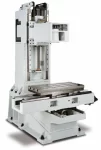Five-axis CNC programming language comparison and selection guide
Introduction
In the world of CNC machining, five-axis CNC machines have gained popularity due to their ability to handle complex and intricate machining tasks. However, to effectively operate these machines, programmers need to use a suitable programming language. In this article, we will compare and provide a selection guide for five-axis CNC programming languages, helping you make an informed choice.
G-code
G-code is the most widely used programming language in the CNC machining industry. It is a low-level language that uses a series of commands to control the movements of the machine’s axes. G-code offers great flexibility and compatibility with various machines. However, programming complex five-axis operations using G-code can be time-consuming and challenging, as it requires manual calculation and coordination of multiple axes simultaneously.
APT
APT (Automatically Programmed Tools) is a high-level programming language specifically designed for controlling machine tools. It provides a more intuitive and user-friendly approach compared to G-code. APT allows users to define machining operations using simple instructions such as “DRILL,” “MILL,” or “TURN.” With APT, programmers can focus on the intended result rather than the specific machine movements. However, APT is not widely supported by modern five-axis CNC machines, limiting its compatibility.
ISO 14649 (STEP-NC)
ISO 14649, also known as STEP-NC, is an international standard that specifies a neutral and universal format for CNC machining instructions. It aims to overcome the limitations of traditional programming languages by providing a comprehensive data model for defining machining processes. STEP-NC offers various advantages for five-axis programming, including improved interoperability, better integration with CAD/CAM systems, and enhanced support for complex tool paths. However, its adoption in the industry is still limited, and compatibility with older CNC machines may be an issue.
CAM Software
CAM (Computer-Aided Manufacturing) software packages provide a graphical interface for programming five-axis CNC machines. These software solutions simplify the programming process by allowing users to create tool paths visually. CAM software often supports multiple programming languages, including G-code and APT, making it a versatile option. However, the reliance on specific software and potential costs associated with CAM systems can be a drawback for some users.
Conclusion
When selecting a programming language for five-axis CNC machining, it is essential to consider factors such as complexity, compatibility, and ease of use. G-code remains the most widely used language but can be challenging for complex operations. APT provides an intuitive approach but may lack compatibility with modern machines. ISO 14649 offers advanced capabilities but has limited adoption. CAM software presents a user-friendly option but can involve additional costs. Each language has its merits, and the choice should be based on the specific requirements of the machining tasks at hand.
In conclusion, selecting the right programming language is crucial for maximizing the potential of five-axis CNC machines. By understanding the strengths and limitations of each language, programmers can make informed decisions that result in efficient and accurate machining operations.
.webp)
